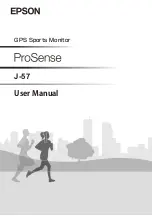
DSM570
User’s Manual
Page 22
Revision 1.8.3
4.3 Alerts
An
alert
is a signal to a user that there is either an alarm or warning condition requiring user
intervention.
Alerts are integrated in an NMEA2000
®
system. For each Alert, one device acts as a master, or Alert
Source, and monitors a parameter against a preset threshold. When the parameter crosses this
threshold, the Alert is displayed on the Alert Source and an Alert Message is sent out on the
NMEA2000
®
bus to other devices capable of displaying Alerts. Optionally, an Annunciator message is
sent to devices capable of sounding an audio alarm (e.g. the ALM100). Currently, the DSM150,
DSM250, DSM410, DSM570 and N2KView™ Vessel Monitoring Software are capable of generating
and receiving Alert Messages.
The Alert may be accepted or cancelled from any capable device, in which case an Alert Response
Message is sent to the Alert Source, which in turn will turn the Annunciators off and inform the
devices on the bus of the new Alert Status.
The DSM570 can support the definition of up to 40 alerts.
4.3.1 Alert Types
There are two classes of alerts, which are distinguished by their severity:
•
Alarm
– An alarm is a type of alert announcing a condition requiring immediate attention or
user intervention. Alarms are shown in red (when Active), and always appear above the
warnings on the Alert Status Screen.
•
Warning
– A warning is a type of alert announcing a condition requiring non-immediate
attention for precautionary reasons. Warnings are shown in yellow (when Active), and always
appear below alarms on the Alert Status Screen.
4.3.2 Alert Terminology
The following alert terminology, consistent with International Maritime Organization Code on Alarms
and Indicators, is used in N2KView™ and the DSM570.
•
Accept
– The user action of acknowledging the existence of an alert. Alerts are only accepted
when they are Active
•
Cancel
– The user action of removing an alert from the list of displayed alerts. Alerts may only
be cancelled if the condition causing the alert has been removed.
•
Clear
– An alert is cleared when the condition causing the alert is removed. This is not a user
action.
•
Trigger
– An alert is triggered when the condition monitored by the alert is met.
4.3.3 Alert Priority
Each alert has a priority which you can define, ranging from 0 to 4000 with 0 the highest or most
important priority and 4000 the lowest or least important priority. Alarms always have a higher priority
than Warnings (i.e. an Alarm with a priority of 4000 has a higher priority than a warning with priority
0).
Содержание DSM570
Страница 98: ...DSM570 User s Manual Page 82 Revision 1 8 3 Figure 70 DSM150 DSM250 DSM410 DSM570 Remote Device Selection...
Страница 166: ...DSM570 User s Manual Page 150 Revision 1 8 3 Figure 154 RAA100 Setting the to Sender Gauge Resistance...
Страница 223: ...Revision 1 8 3 Page 207 Figure 239 Compass Rose North Up Display...
Страница 243: ...Revision 1 8 3 Page 227 Figure 269 Favorite Screen Showing Highlighted Switch Breaker...
















































